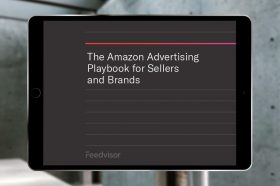Resources - Blog
How Can Brands Establish Wholesale Relationships With Amazon?

Brand manufacturers have a choice to make upon establishing an Amazon distribution strategy — whether they want to sell as a first-party entity to Amazon or as a third-party seller on Amazon. Essentially, 1P resembles a wholesale relationship for a manufacturer and 3P is a more typical direct to consumer model. With an increasing number of brands turning to Amazon, this post will focus on how the company establishes wholesale relationships with brands for Vendor Central, the Amazon web interface for the 1P side of the house.
Stay on top of the latest e-commerce and marketplace trends.
How Does Vendor Central Work?
Vendor Central is a portal used to facilitate business between Amazon and specific vendors that their vendor management team invites. Typically, Amazon vendor managers are responsible for sourcing specific products for wholesale and will invite the vendors to sell their branded items to Amazon. Based on the massive amount of consumer search and purchase behavior data the company has, they develop a list of brands to seek out regarding joining Vendor Central. Usually, the vendor manager will contact the brand to see if a direct sourcing relationship is possible. If not, the vendor manager will find distributors who are willing to supply the product to Amazon. Once a brand manufacturer joins Vendor Central, they collaborate with the vendor management team on an ongoing basis.
While sellers list, price, and market their products themselves, brand manufacturers and vendors negotiate a wholesale price per item and sell their products to Amazon-employed buyers, who then list and resell the products to Amazon users. Once set up, the vendors receive payment from Amazon on a monthly basis, on wholesale terms. Before that can happen, the buyer orders from and pays Amazon, and Amazon ships the merchandise. If the customer is making a purchase from a vendor, the product page will specify that the item is “In Stock, Shipped and Sold by amazon.com.”
Advantages for Brands in Vendor Central
New product launches can be difficult for 1P sellers, as Amazon has no incentive to purchase a product from you without knowing what the demand will look like. Although it can sometimes be challenging to get in the door with Amazon on the wholesale side, there are several key advantages to this business model that may make sense for your operation.
1. Customers are extremely likely to buy your products. The items, which show up as “sold by Amazon,” have Amazon’s seal of approval, making it a more attractive option for many shoppers. Amazon promotes its own items, so the ones that you sell via wholesale may also receive listing priority, which can result in increased conversions.
2. The business process is less complex with Vendor Central. Amazon takes on more of the risk and does the heavy-lifting related to fulfillment, marketing, and inventory maintenance. This makes it an appealing option for brands who are logistics-savvy with sourcing and filling purchase orders, but prefer to be more hands-off when it comes to the promotional or customer side of the business.
3. You have access to Amazon A+ Content. Only available to 1P manufacturers or distributors, A+ Content integrates high-quality images, charts, and narrative copy into your product detail pages. It is a great example of how vendors can maintain their brand equity and help customers make more informed buying decisions.
4. You can avoid a handful of marketplace fees. Instead of having to pay Amazon third-party seller fees such as referral fees, inventory storage fees, or subscriptions, you would only need to pay a flat fee which allows you to sell unlimited products to Amazon for $39.99 a month.
Is a Wholesale Relationship With Amazon Right for Your Brand?
With a first-party wholesale relationship, you will be in control of product data, purchase orders, freight to Amazon, and cutting invoices. Depending on the needs of your business, you can choose if selling your brand directly to Amazon makes sense, or if you would rather maintain more control by selling directly to the end-user. Both options have very specific advantages, so you should evaluate based on several variables — the size and location of your business, the level of control you want, your fulfillment method, the number of fees you are willing to pay, your business model, and any long or short-term strategies and goals.



